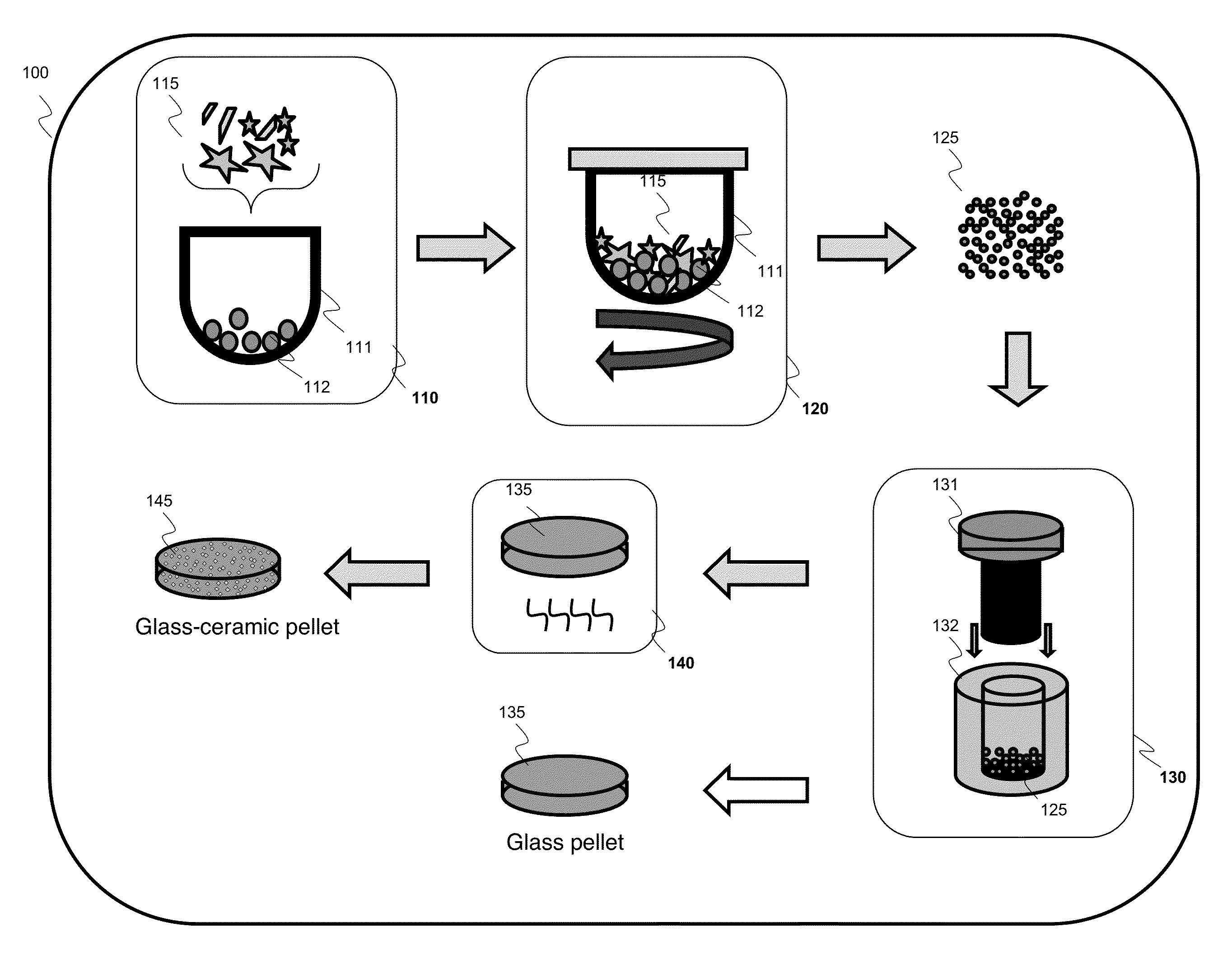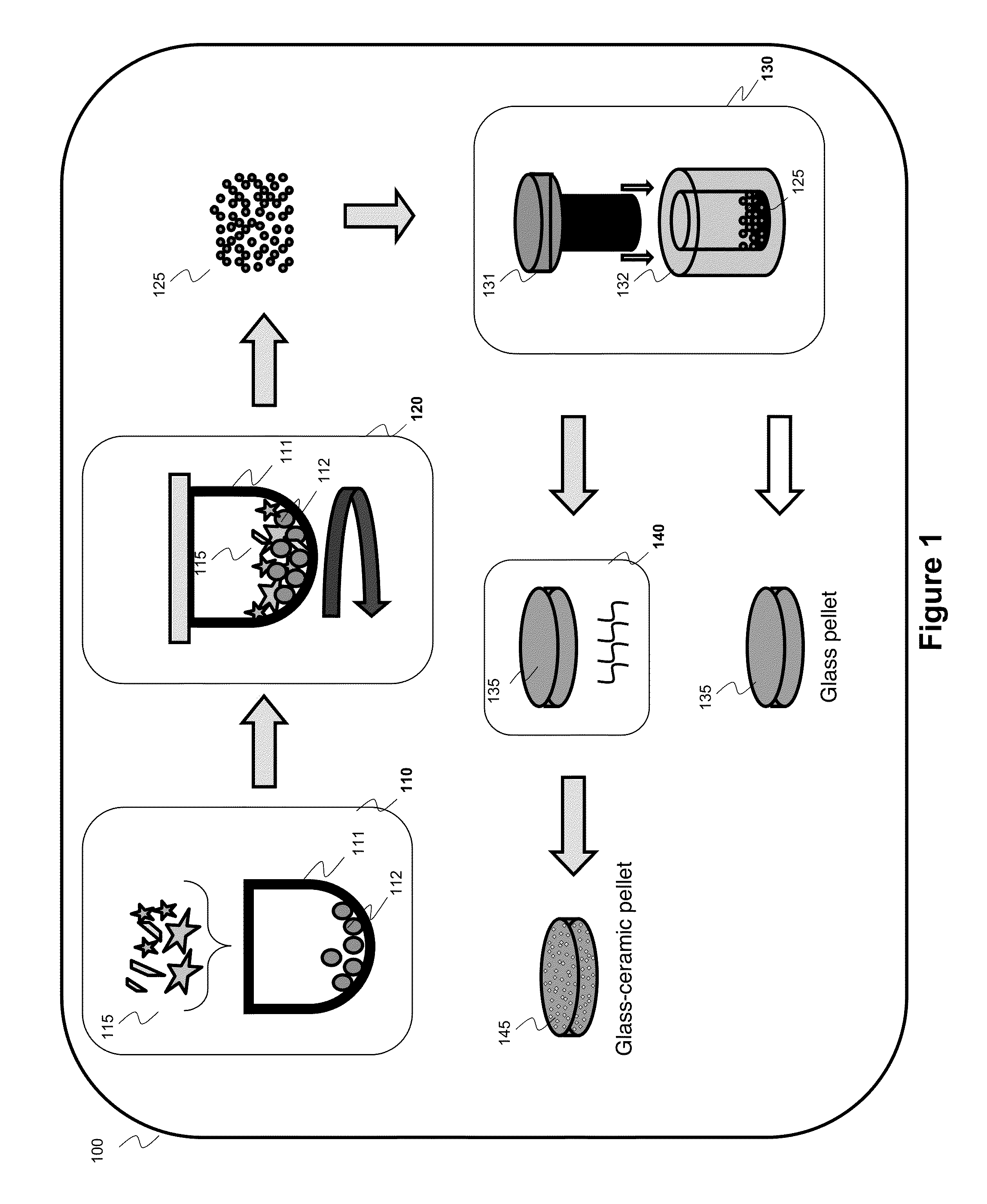Process for obtaining a glass-ceramic material that is optically transparent in the infrared
a glass-ceramic material and infrared technology, applied in the field of optical materials, can solve the problems of high energy consumption, relatively high cost of glass production, and restricted and costly technique for chalcogenide glass synthesis in silica tubes, and achieve the effect of limiting the size of the synthesized material or the composition range in a simple and low-cost manner
- Summary
- Abstract
- Description
- Claims
- Application Information
AI Technical Summary
Benefits of technology
Problems solved by technology
Method used
Image
Examples
Embodiment Construction
[0046]FIG. 1 is a flowchart 100 of a particular embodiment of the method according to the invention.
[0047]The method consists in synthesizing a vitreous material that is optically transparent to an infrared, electromechanical radiation, the amorphization phase of which is obtained by an addition of mechanical energy.
[0048]Here below in the description, a “vitreous material” is understood to mean a chalcogenide-based glass or a glass-ceramic that possesses transparency in the infrared spectrum.
[0049]A step 110 introduces a set of initial elements 115 into a planetary ball mill for purposes of mechanical treatment. The initial elements 115 constitute the elementary products (in the form of powder or massive pieces) needed to obtain a vitreous material and comprise:[0050]one or more metal elements chosen from among Ge, As, Sb, Ga, Sn, In, generally present in a content varying from 0 to 35 mol %; and[0051]one or more chalcogenide elements chosen from among S, Se, Te, generally present ...
PUM
| Property | Measurement | Unit |
|---|---|---|
| melting temperature | aaaaa | aaaaa |
| crystallization temperature | aaaaa | aaaaa |
| infrared wavelengths | aaaaa | aaaaa |
Abstract
Description
Claims
Application Information
 Login to View More
Login to View More - Generate Ideas
- Intellectual Property
- Life Sciences
- Materials
- Tech Scout
- Unparalleled Data Quality
- Higher Quality Content
- 60% Fewer Hallucinations
Browse by: Latest US Patents, China's latest patents, Technical Efficacy Thesaurus, Application Domain, Technology Topic, Popular Technical Reports.
© 2025 PatSnap. All rights reserved.Legal|Privacy policy|Modern Slavery Act Transparency Statement|Sitemap|About US| Contact US: help@patsnap.com


